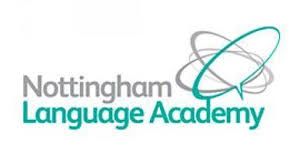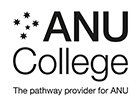
Critical Thinking and Problem-Solving
Course ID: 2512220101113ESH
Course Dates : 22/12/25 Course Duration : 5 Studying Day/s Course Location: London, UK
Language: Bilingual
Course Category: Professional and CPD Training Programs
Course Subcategories: Operations and Process Excellence
Course Certified By: ESHub CPD & LondonUni - Executive Management Training
* Professional Training and CPD Programs
Leading to:
Executive Diploma Certificate
Leading to:
Executive Mini Masters Certificate
Leading to
Executive Masters Certificate
Certification Will Be Issued From :
From London, United Kingdom
Course Information
Introduction
Critical thinking and problem-solving are foundational skills that transcend industries, roles, and contexts. These competencies enable individuals to navigate complex challenges, make informed decisions, and drive innovation in their professional environments. In an era where rapid technological advancements and evolving market demands require adaptability, organizations increasingly value employees who can think critically and propose creative solutions. This course is designed to equip participants with the tools and frameworks necessary to enhance their analytical abilities and apply structured problem-solving methodologies effectively.
One of the primary gaps in many workplaces is the lack of a systematic approach to decision-making. Often, decisions are made impulsively or based on incomplete information, leading to suboptimal outcomes. The absence of critical thinking can result in missed opportunities, inefficiencies, and even reputational damage. For instance, a case study involving a major retail chain revealed that poor decision-making during a product launch—stemming from inadequate analysis of customer feedback—led to significant financial losses. By addressing such gaps, this course empowers participants to adopt evidence-based practices and avoid common pitfalls.
The benefits of mastering critical thinking and problem-solving extend beyond individual growth. Organizations that foster these skills among their workforce report higher levels of employee engagement, improved productivity, and enhanced competitiveness. Drawing on established theories such as Bloom’s Taxonomy and Edward de Bono’s Six Thinking Hats, the course integrates proven frameworks to promote cognitive flexibility and structured reasoning. Participants will learn how to evaluate arguments, identify biases, and synthesize diverse perspectives into actionable insights.
Real-world examples further underscore the importance of these skills. Consider the story of a healthcare administrator who used root cause analysis to address recurring patient dissatisfaction issues. By systematically identifying underlying problems and implementing targeted interventions, the administrator not only resolved immediate concerns but also improved overall service quality. Such examples highlight how critical thinking and problem-solving can transform challenges into opportunities for growth and improvement.
Furthermore, industry trends indicate a growing demand for professionals who can demonstrate strong analytical capabilities. As automation and artificial intelligence reshape job landscapes, roles requiring human judgment, creativity, and strategic thinking become more prominent. This course aligns with these trends by equipping participants with transferable skills that remain relevant in dynamic work environments. Whether addressing operational inefficiencies, developing new products, or managing stakeholder relationships, the principles taught in this program provide a solid foundation for success.
Ultimately, this course represents an investment in both personal and organizational development. By cultivating critical thinking and problem-solving skills, participants position themselves as valuable contributors to their teams and industries. They gain the confidence to tackle ambiguity, the ability to communicate solutions persuasively, and the resilience to adapt to changing circumstances. Through a blend of theory, practical exercises, and collaborative learning, this program ensures participants leave equipped to excel in their professional endeavors.
Objectives
By attending this course, participants will be able to:
Analyze complex problems using structured frameworks such as SWOT analysis and Fishbone diagrams.
Evaluate the validity of arguments and identify logical fallacies in written and verbal communication.
Design innovative solutions to workplace challenges by applying design thinking principles.
Implement decision-making models to prioritize options and mitigate risks effectively.
Apply ethical reasoning to assess the implications of decisions on stakeholders and society.
Synthesize diverse perspectives to develop comprehensive strategies for problem resolution.
Reflect on personal biases and assumptions to enhance objectivity in decision-making processes.
Who Should Attend?
This course is ideal for:
Mid-level managers, team leaders, and project coordinators seeking to enhance their leadership capabilities.
Consultants and analysts tasked with solving client-specific challenges.
Educators and trainers aiming to incorporate critical thinking into their teaching methodologies.
Entrepreneurs and business owners looking to refine their strategic planning skills.
These groups will find the course valuable because it addresses the need for robust analytical skills and adaptable problem-solving techniques in their respective fields. While prior experience in problem-solving is beneficial, the course is suitable for intermediate learners who have foundational knowledge of workplace dynamics and wish to advance their competencies.
Training Method
• Pre-assessment
• Live group instruction
• Use of real-world examples, case studies and exercises
• Interactive participation and discussion
• Power point presentation, LCD and flip chart
• Group activities and tests
• Each participant receives a 7” Tablet containing a copy of the presentation, slides and handouts
• Post-assessment
Program Support
This program is supported by:
* Interactive discussions
* Role-play
* Case studies and highlight the techniques available to the participants.
Daily Agenda
Daily Schedule (Monday to Friday)
- 09:00 AM – 10:30 AM Technical Session 1
- 10:30 AM – 12:00 PM Technical Session 2
- 12:00 PM – 01:00 PM Technical Session 3
- 01:00 PM – 02:00 PM Lunch Break (If Applicable)
- Participants are expected to engage in guided self-study, reading, or personal reflection on the day’s content. This contributes toward the CPD accreditation and deepens conceptual understanding.
- 02:00 PM – 04:00 PM Self-Study & Reflection
Please Note:
- All training sessions are conducted from Monday to Friday, following the standard working week observed in the United Kingdom and European Union. Saturday and Sunday are official weekends and are not counted as part of the course duration.
- Coffee and refreshments are available on a floating basis throughout the morning. Participants may help themselves at their convenience to ensure an uninterrupted learning experience Provided if applicable and subject to course delivery arrangements.
- Lunch Provided if applicable and subject to course delivery arrangements.
Course Outlines
Foundations of Critical Thinking
Understanding the principles of critical thinking.
Identifying cognitive biases and their impact on decision-making.
Exploring the role of logic and reasoning in problem-solving.
Applying Bloom’s Taxonomy to enhance analytical skills.
Day 2:
Tools and Frameworks for Problem-Solving
Introduction to SWOT analysis and its applications.
Using Fishbone diagrams to identify root causes.
Leveraging Pareto analysis for prioritization.
Case study: Solving real-world problems with structured tools.
Day 3:
Creative Approaches to Innovation
Principles of design thinking and its stages.
Brainstorming techniques to generate innovative ideas.
Prototyping and testing solutions in controlled environments.
Group activity: Developing a prototype for a given challenge.
Day 4:
Decision-Making Models
Overview of decision-making frameworks (e.g., Grid Analysis).
Assessing risks and rewards in decision-making.
Ethical considerations in professional decision-making.
Role-playing exercise: Making high-stakes decisions under pressure.
Day 5:
Practical Applications and Reflection
Integrating critical thinking into daily workflows.
Communicating solutions effectively to stakeholders.
Reflective practice: Identifying areas for continuous improvement.
Final group presentation: Presenting a comprehensive problem-solving strategy.



















































